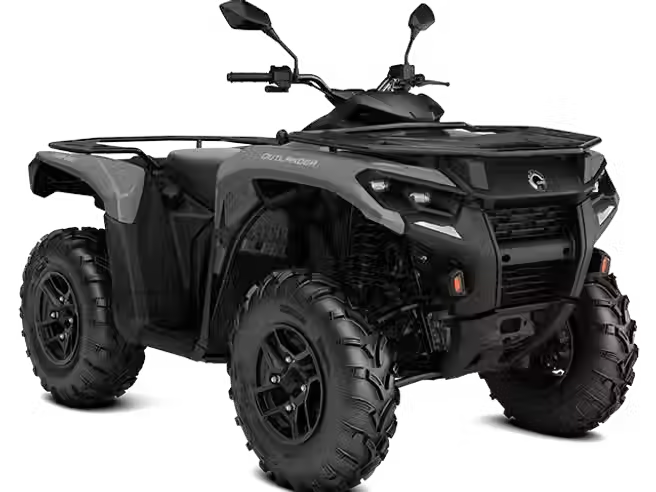How Does a Flail Mower Cut?
- Beckside Machinery

- Aug 30, 2024
- 4 min read
If you've ever wondered how to maintain a large area of overgrown grass, weeds, or even small bushes, you may have come across a flail mower as a potential solution. But what exactly is a flail mower, and how does it cut through tough vegetation? In this article, we'll explore how a flail mower works, its advantages, and why it might be the perfect tool for your landscaping needs.
What is a Flail Mower?
A flail mower is a type of heavy-duty landscaping equipment designed to handle tough vegetation, including tall grass, brush, and even small trees. It gets its name from the "flails" attached to a rotating drum. These flails are short, Y- or T-shaped blades made from metal, typically mounted on a horizontal shaft. As the drum rotates, the flails swing outwards, cutting through vegetation with significant force.
Unlike other mowers, such as rotary mowers or sickle bar mowers, which use a single blade or series of blades, a flail mower's unique design allows it to handle a wider range of vegetation types with greater efficiency and durability.
How Does a Flail Mower Cut?
To understand how a flail mower cuts, let's break down its operation into a few simple steps:
The Rotating Drum: The core of the PTO flail mower is its rotating drum, which is powered by the engine or PTO (Power Take-Off) of the compact tractor it's attached to. This drum spins at high speeds, typically between 2,000 and 3,000 RPM, depending on the model and application.
The Flails: As the drum rotates, the flails attached to it are thrown outward due to centrifugal force. These flails are designed to strike vegetation at a specific angle, slicing through it as the drum spins. The cutting action of the flails is not unlike the way a hammer hits a nail. Each flail makes contact with the vegetation, chopping it into smaller pieces.
The Cutting Process: As the mower moves forward, the rotating flails continuously strike the vegetation. The flails' swinging action creates a scissor-like cutting motion, effectively slicing through grass, weeds, and small brush. The cut material is then left behind as mulch, which can be beneficial for the soil.
Self-Cleaning Action: One of the advantages of a flail mower is its self-cleaning mechanism. As the flails swing, they naturally expel any debris that could potentially clog the mower. This ensures that the mower maintains its cutting efficiency even in dense or wet conditions.
Advantages of Using a Flail Mower
Flail mowers offer several advantages, particularly for those dealing with challenging terrain or heavy vegetation. Here are some reasons why a flail mower might be the right choice for you:
Versatility: Flail mowers are incredibly versatile, capable of handling everything from regular grass cutting to tackling overgrown brush and even small saplings. This makes them ideal for maintaining large properties, roadside verges, orchards, and vineyards.
Safety: Unlike rotary mowers, which can throw debris over long distances, flail mowers are safer to use in areas where flying debris could be a hazard. The flails tend to throw material downward, reducing the risk of injury or damage to nearby objects.
Even Cutting: Flail mowers provide a more uniform cut than some other types of mowers. This is because the flails chop vegetation into smaller pieces, which are distributed evenly across the cut area. This can create a neater appearance and also helps with mulching.
Durability: The flails on a flail mower are typically more durable and less prone to damage than the blades on a rotary mower. If a flail hits a hard object, such as a rock, it will usually bounce back without breaking, reducing maintenance costs.
Reduced Ground Pressure: Because flail mowers are often mounted on compact tractors, they distribute their weight more evenly across the ground. This reduces soil compaction, which can be beneficial for the health of your land.
When to Use a Flail Mower
While flail mowers are versatile, there are specific situations where they excel. If you're managing land with uneven terrain, dense undergrowth, or areas with a high risk of debris, a flail mower is likely your best option. They are also ideal for maintaining fields, meadows, and other areas where you need to keep vegetation under control without creating a manicured lawn-like appearance.
For regular lawn maintenance, a flailing mower might be overkill. In such cases, a standard rotary mower or lawn tractor may be more appropriate. However, if you find yourself regularly battling thick weeds, brambles, or overgrown grass, investing in a flail mower could save you time and effort in the long run.
Conclusion
A flail mower is a powerful and efficient compact tractor attachment for cutting through tough vegetation. Its unique design, with rotating flails that chop and mulch vegetation, makes it a versatile option for maintaining large areas of land. Whether you're managing a small farm, a large estate, or even just a particularly wild garden, a flail mower can help you keep your property in check with less effort and greater results.
Understanding how a flail mower cuts is the first step in deciding whether it's the right tool for your needs. With its ability to handle a wide range of vegetation and terrain, it's no wonder that flail mowers for sale are a favourite choice for professional landscapers and landowners alike.




Comments